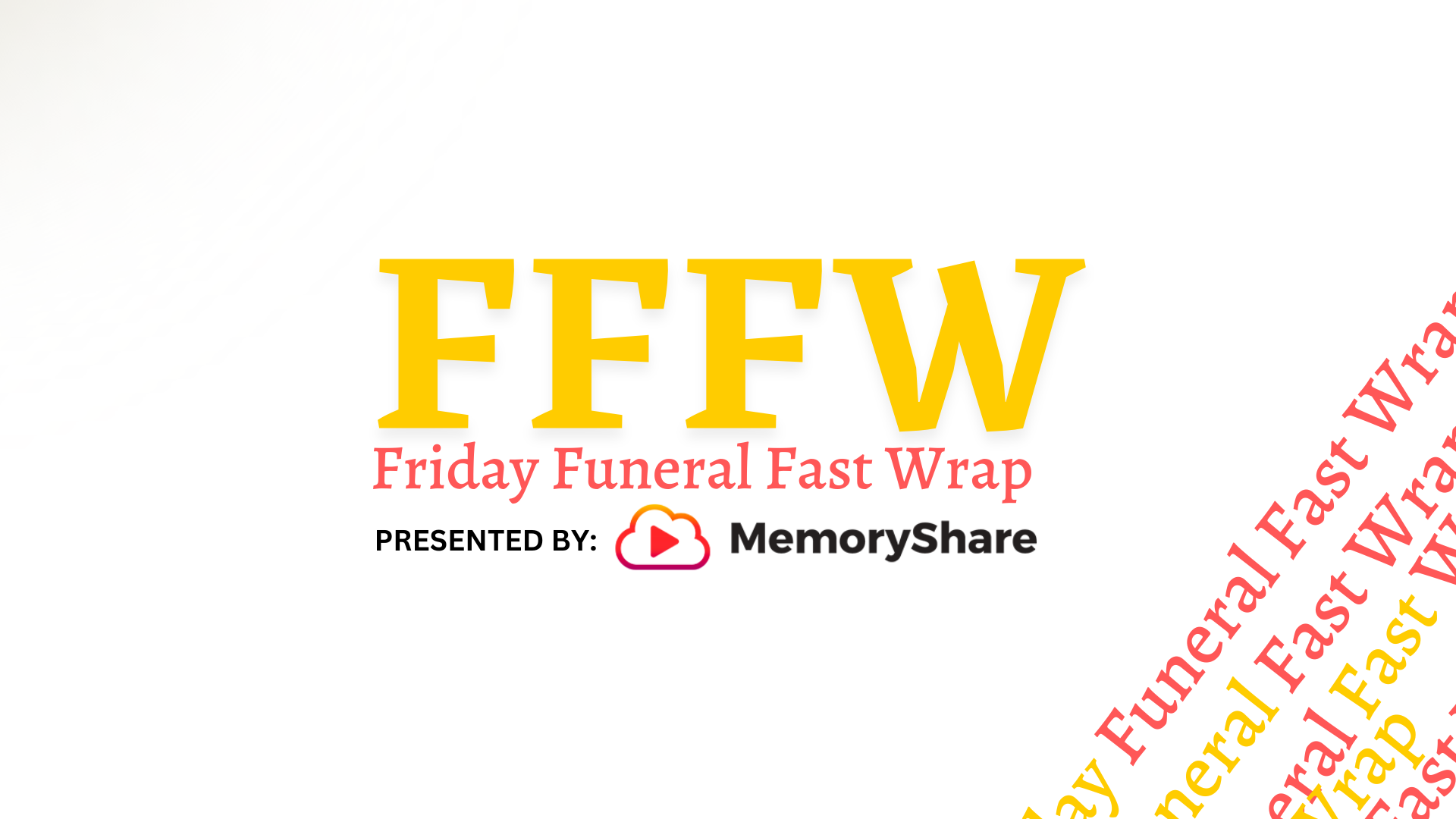Advocating For 1A Vaccine Priority for Funeral Workers: “You Name It, We’ve Tried It”
The message from our recent Connecting Directors COVID Vaccine Priority Survey is loud and clear: The deathcare profession is not being consistently treated with the urgency and understanding it deserves when it comes to where you stand in line for the COVID vaccine. With less than 25% of respondents from 36 states and Canada having received their first shot, and only half of the respondents reporting they’re in a high-priority group of recipients, it’s obvious there’s a problem with either states’ understanding of your risk level or the slow-moving bureaucracy that dictates distribution.
Either way, as our survey showed, you’re aware that your respective deathcare organizations are doing everything they can to advocate on your behalf for months on end. Unfortunately, though, they’re facing a tough battle when it comes to actually impacting the powers that be.
“Associations are trying, but the government is failing us,” wrote one survey respondent. “Exposed, essential, exhausted… and ignored.”
A promising start
Melissa Sullivan, Executive Director and 34-year veteran of the Ohio Funeral Directors Association (OFDA), is just as frustrated as you are.
“You name it, we’ve tried it,” Sullivan says of the OFDA’s efforts to place her state’s deathcare workers in the top-priority seat with healthcare workers. “We started back in October lobbying at the federal level, back before there was a vaccine that had been approved.”
At the time, Sullivan believed the deathcare organizations had achieved a victory. According to an October 2, 2020 publication by the National Academy of Science, Engineering, and Medicine (NASEM), “morticians, funeral home workers, and other death care professionals involved in handling bodies” were to be included in the highest-priority Phase 1A Population of High-Risk Health Workers, along with healthcare clinicians and staff and first responders.
“We felt very good being able to contribute to that effort,” Sullivan says. “Then in November, we were alerted that even though there is federal framework, each state was responsible for implementing their own plan. That’s when we switched gears and started advocating on a state level directly with the governor, giving them information, and the science behind it.”
The reality for funeral workers
The information OFDA provided included all of the touchpoints where deathcare professionals are put at risk: Retrieving individuals from COVID floors at hospitals, going into residences where families have been exposed to COVID through the deceased, and interacting with families and friends during arrangement meetings and visitations, to name a few.
“Can they wear masks? Can they practice universal precautions? Sure they can,” Sullivan says. “But beyond that, real exposure is probable, even if they’re restricting numbers and following all kinds of social distancing guidelines. That was our focus with state planning.”
The framework detailed by NASEM was, in the words of the National Funeral Directors Association (NFDA), “designed to inform the decisions by health authorities, including the Advisory Committee on Immunization Practices (ACIP), as they create and implement national and/or local guidelines for COVID-19 vaccine allocation.” In reality, though, many state and local authorities didn’t refer back to this guidance or don’t fully understand it, leading to even more conflict and confusion for advocates like OFDA and its members.
“When we indicated we would be giving our membership direction to contact their local health department to seek the vaccine as public health in phase 1a, we were told ‘No’ in no uncertain terms,” says Sullivan. “[They said,] ‘No, that’s not accurate. These are for public employees, and funeral homes are private businesses.’”
A critical need
With this frustrating response, Sullivan and her counterparts pivoted yet again, reaching out to the office of Ohio Gov. Mike DeWine in early December. Their message was twofold, highlighting the day-to-day dangers funeral workers face as well as alerting them to the impact to the community if they weren’t available to perform their duties due to COVID.
“We’re talking about a critical need,” says Sullivan. “We are a very small community. We do not have an abundance of workers. Going into the pandemic there was already a bit of a strain, and we didn’t have a lot of extra people to fill in the gaps. That small population is critical to public health, offering a vital service to communities and families. What would happen if they weren’t available?”
Sullivan, sitting OFDA President Devin Woodyard, and OFDA Immediate Past President Gary Burr, CFSP actively represent the OFDA on several pandemic-related workgroups. One focuses on a fatality planning scenario where there simply aren’t enough deathcare workers or facilities to meet the demands of an overwhelming death rate. While these plans are in place and ready to be deployed at a moment’s notice, Sullivan doesn’t want to see that need arise.
“The last correspondence that we sent on New Year’s Eve was basically begging [the governor’s office] to recognize that we are on the verge of a breaking point,” she explained. “Our funeral home workers are completely exhausted, having to delay services, and working with a reduced staff. Workers that are ill hardly get an opportunity to recover.”
Granted an audience
Sullivan and OFDA leadership haven’t limited their outreach to the governor’s office. They’ve sent correspondence and had communication with other key legislators and the state’s Department of Health, to name a few.
Connecting Directors also reached out to the Ohio Board of Embalmers and Funeral Directors for this story, receiving the following reply from the department’s Executive Director Cheryl Grossman:
“The Embalmers and Funeral Directors Board continues to advocate for providing the COVID vaccine for deathcare workers. We have been working directly with the Administration stressing the importance of providing the vaccine for this group. As you stated, this is a major concern for this profession as they deal with decedents, families and settings where COVID exists. At this time, that is the only information that I can share.”
OFDA’s Sullivan was able to secure an audience with the new president of the Ohio Senate, Sen. Matt Huffman, thanks to his close tie with an OFDA member funeral director.
“We were very grateful for that opportunity,” Sullivan says. “That doesn’t happen by chance. These are extremely busy individuals, with very complex schedules. Sen. Huffman recognized our concerns and indicated he would take them to the executive branch.”
A place in the line
Although Sullivan greatly appreciates the kindness and attention of Sen. Huffman, she’s realistic about the possible outcomes of the meeting.
“We know and have been told many times that ‘We [Ohio Department of Health] understand and have received every one of your correspondences and your reasons for inclusion are very compelling,’” she says. “They have heard what we’re saying. They know the science and they know the recommendations on the federal level. They know what our concerns are and the multiple opportunities for exposure.”
“But what we have just heard is that they are directing the vaccine ‘Where they can save the most lives,’” Sullivan continues. “And that’s admirable, but along the way, you have to consider those that are caring for others and keeping people alive. We understand that they should be first in line, but there’s a place for us in that line, as members of the public health sector. And it has to be prior to some other populations.”
Silent for too long
With the reality being that each state is responsible for crafting its own plans and priorities, the OFDA has been collecting data from other states, finding that — as our survey indicated — the results are all over the board. In some states, funeral workers are included in Phase 1A, in others they’re 1B, and in 10 states, their priority is still undefined. In Ohio, at least, the OFDA is doing all they can to move their constituents into that 1A group, or at least offer a higher priority than they are now receiving.
“Know we have not let our foot off the pedal since October in this regard,” Sullivan says. “We’ve done everything possible to make sure this community gets the acknowledgement and the protection they deserve.”
Sullivan’s commitment stems from a true love of the people she serves.
“I respect and admire and truly in my heart of hearts love these people,” she says. “It takes a very unique individual to be in this situation — in this career originally. They look at this as a career, but also as a commitment, an oath to serve. A lot of them are very, very proud, very stoic individuals. And I think we’ve been silent for too long. They view the pandemic as a crisis, but they are reluctant to ask for help.”
Sullivan recommends that deathcare workers be open to telling their honest and troubling stories — to the media, legislators, local health departments, or to anyone who will listen.
“I think it’s time to be very transparent,” she adds. “We’ve seen a few news stories, and I applaud our members for being truthful with the media and letting them know what circumstances we’re facing. We’ve done everything possible to make sure this community gets the acknowledgment and the protection they deserve. So I would just ask that they not be reluctant to share their stories with others.”




